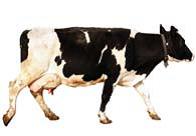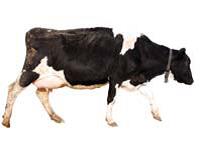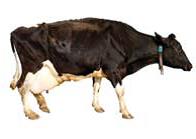Mobility
Why is it measured?
Little is known about the prevalence of lameness in beef cattle in the UK, although it is expected to be lower than for dairy cattle. Nonetheless lame animals are likely to be in discomfort or pain and are predisposed to further disease challenges (e.g. mastitis, swollen hocks), reduced fertility, lowered milk production and reduced weight gain. Early recognition, investigation and treatment of any lame animal is essential to limit pain, aid recovery and minimise any additional complications. AHDB Beef & Lamb recommend ensuring that both bulls and cows are sound to maximise their performance.
Lameness is most often caused by foot lesions and can be both infectious (e.g. digital dermatitis) and non-infectious (e.g. traumatic), and it is important for farmers to identify the types of lesions present in order that common causes can be addressed.
How to assess and score using the AssureWel measure
1. Mobility Individual measure
|
Sample: 20 cows selected at random (3 or more assessed jointly with stockperson)
Assess using the DairyCo scoring method. Observe cows, ideally on a hard (i.e. concrete) non-slip surface. Monitor each cow individually allowing them to make between 6-10 uninterrupted strides. Watch the cow from the side and the rear.
|
Scoring:
0/1 = Good/Imperfect mobility
Walks with even weight bearing and rhythm on all four feet, with a flat back;
long fluid strides possible; or steps uneven (rhythm or weight bearing) or
strides shortened; affected limb/s not immediately identifiable |

|
2 = Impaired mobility
Uneven weight bearing on a limb that is immediately identifiable
and/or obviously shortened stride
(usually with an arch to the centre of the back)
|

|
|
3 = Severely impaired mobility
Unable to walk as fast as a brisk human pace
(cannot keep up with the healthy herd)
and signs of impaired mobility (score 2)
Images kindly supplied by DairyCo
|

|
- Lameness
- Cleanliness
- Body Condition Score (adult cattle only)
- Hairloss, lesions and swellings
- Animals with respiratory signs
- Cattle needing further care
- Disbudding, dehorning and castration
- Mortality